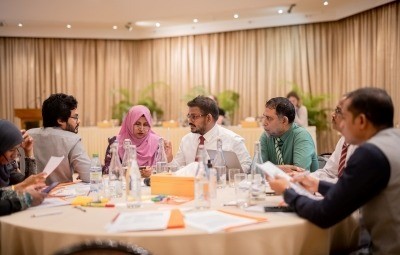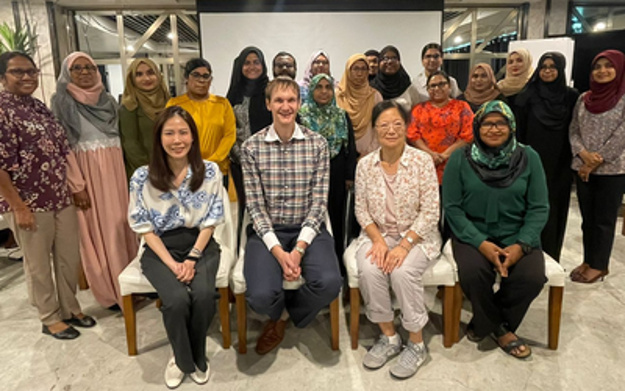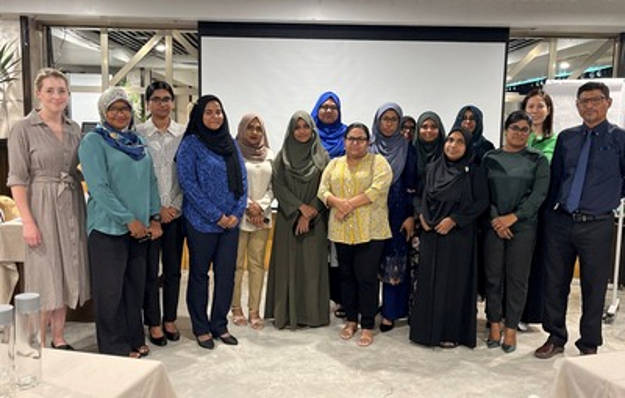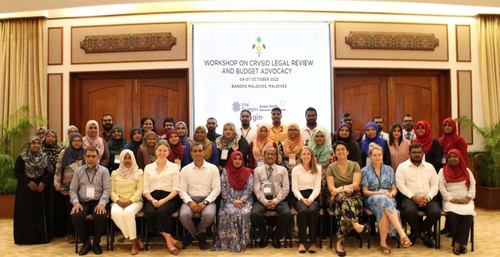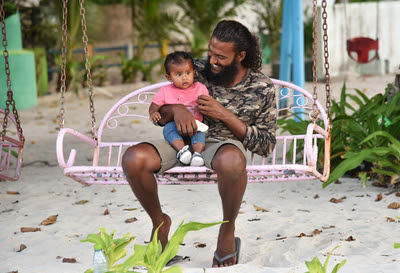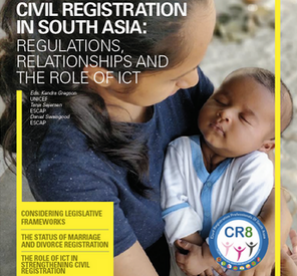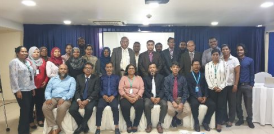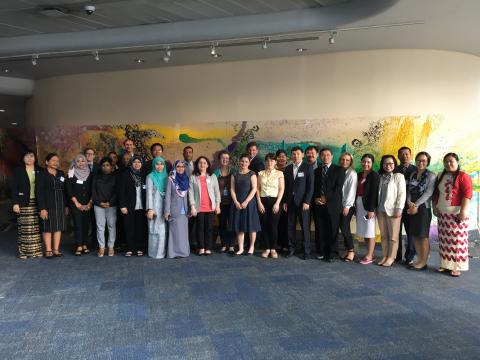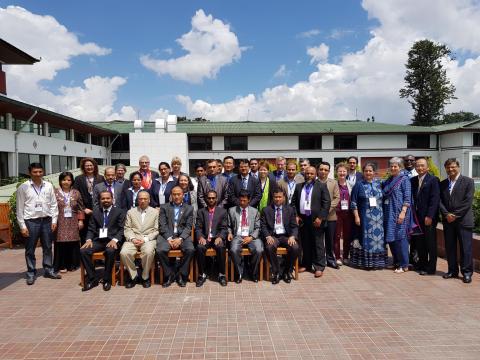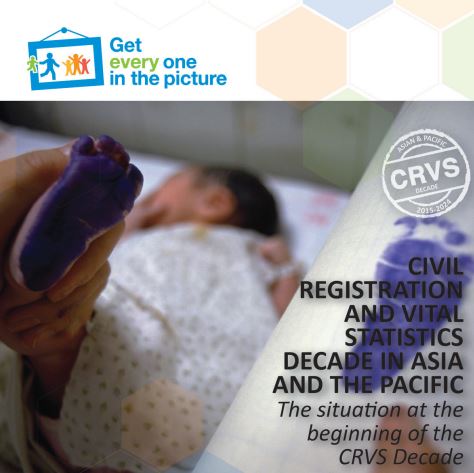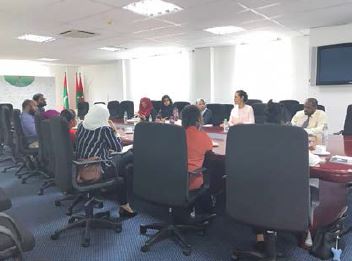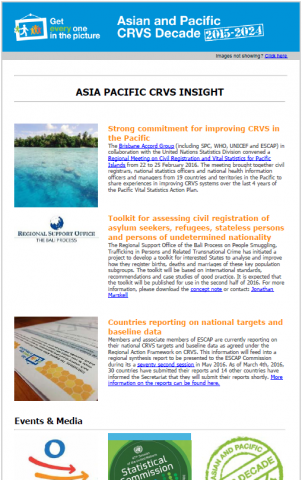The legal framework for civil registration in the Maldives is to be mostly found in the law on birth registration and death certification, enacted in 1993. Two main authorities have responsibilities in the system, the Ministry of Health and the Department of National Registration (DNR). The DNR is responsible for the collection of birth forms and death forms and their entry in the online database, and the Ministry of Health maintains data relating to births and deaths with the information collected from the birth and death form completed at the time of occurrence of a birth and a death. Registration can be locally carried out in 2 hospitals (both in capital city Malé), 6 Regional Hospitals, 13 Atoll Hospitals, 168 Health Centres, 189 Island Councils or 19 Atoll Councils. Vital statistics are the responsibility of the National Bureau of Statistics, a bureau of the Ministry of National Planning and Infrastructure. A CRVS coordination committee was established in 2017, chaired by the State Minister of Health, and with representants from the Department of National Registration, the National Centre for Information Technology, and the National Bureau of Statistics.
Birth registration has a legally defined 7 days limit, with fees applying, whereas death registration has no defined limit, but is necessary to obtain a funeral permit and is free of charge. Birth registration is approximately complete, and death registration was estimated to be around 90% complete in 2014. The establishment of the online birth and death system, in 2010, an online software application built on the Government Network of Maldives or GNM (e-Government platform), has helped a lot in the development of the CRVS system, but some challenges remain.
Some of those include personnel limitations, in terms of numbers, resources and training, which results in inconsistent data quality, most prominently in cause of death coding. The lack of incentive for death registration has also been pointed out as an impediment on the road to getting everyone in the picture.
Ms. Fathimath Riyaza, Deputy Statistician, National Bureau of Statistics Ministry of National Planning and Infrastructure
Goal 1. Universal civil registration of births, deaths and other vital events |
Goal 1 Targets:
Goal 2. All individuals are provided with legal documentation of civil registration of births, deaths and other vital events, as necessary, to claim identity, civil status and ensuing rights |
Goal 2 Targets:
Goal 3. Accurate, complete and timely vital statistics (including on causes of death) are produced based on registration records and are disseminated |
Goal 3 Targets:
Goal 1. Universal civil registration of births, deaths and other vital events |
Goal 1 is an expression of the internationally accepted principle of the universal coverage of civil registration. The CRVS system should register all vital events occurring in the territory and jurisdiction of the country or area, including among hard-to-reach and marginalized populations.
National Targets:
BASELINE
2014100%
MIDTERM
2018100%
TARGET
2024100%
MIDTERM
201798.8%
TARGET
2024100%
baseline
2013100%
MIDTERM
2018100%
TARGET
2024100%
Note: This country has not submitted estimates for the number of deaths for all years. The level of completeness of death registration was therefore assessed with international estimates for every year, to allow comparison. These measurements are therefore to be interpreted with caution.
baseline
201481%
MIDTERM
201789%
TARGET
2024100%
baseline
2014100%
MIDTERM
2018100%
TARGET
2024100%
Goal 2. All individuals are provided with legal documentation of civil registration of births, deaths and other vital events, as necessary, to claim identity, civil status and ensuing rights |
Goal 2 reflects that CRVS systems provide legal documentation of civil registration to individuals and families for legal and administrative purposes. Legal documentation is strongly linked with a broad range of rights and activities, in particular legal identity. This goal addresses the distinction between the civil registration of a vital event and the possession of formal proof that it took place, in the form of legal documentation.
National Targets:
baseline
201396.3%
MIDTERM
201794.9%
TARGET
2024100%
baseline
2013100%
MIDTERM
2018100%
TARGET
2024100%
Goal 3. Accurate, complete and timely vital statistics (including on causes of death) are produced based on registration records and are disseminated |
Goal 3 highlights the critical importance of civil registration being linked to the production and quality assurance of vital statistics on the occurrence and characteristics of vital events.
National Targets:
TARGET
Target achieved
TARGET
Target achieved
Note: This target was not monitored as part of the Midterm Questionnaire on the Implementation of the Regional Action Framework for CRVS in Asia and the Pacific.
baseline
201485.9%
TARGET
2024100%
baseline
201210%
MIDTERM
20176.2%
TARGET
20244%
Note: In light of recent countries’ experiences, Verbal autopsy is not encouraged to be applied to a large population scale, but rather on a representative sample. To reflect this, Target 3E is not anymore monitored by the coverage percentage of Verbal autopsy, but by the use or not of Verbal autopsy and its different applications.
baseline
2014Yes
MIDTERM
No
TARGET
2020
TARGET
Target achieved
TARGET
2020

National Coordination Mechanism
Status in Maldives: Complete

Comprehensive Assessment
Status in Maldives: Complete

National Targets for 2024
Status in Maldives: Complete

Monitoring & Reporting Plan
Status in Maldives: Not started

Inequality Assessment
Status in Maldives: Not started

National Strategy
Status in Maldives: Plans

National Focal Point
Status in Maldives: Complete

Reporting to ESCAP - Baseline
Status in Maldives: Complete

Reporting to ESCAP - Midterm
Status in Maldives: Complete






